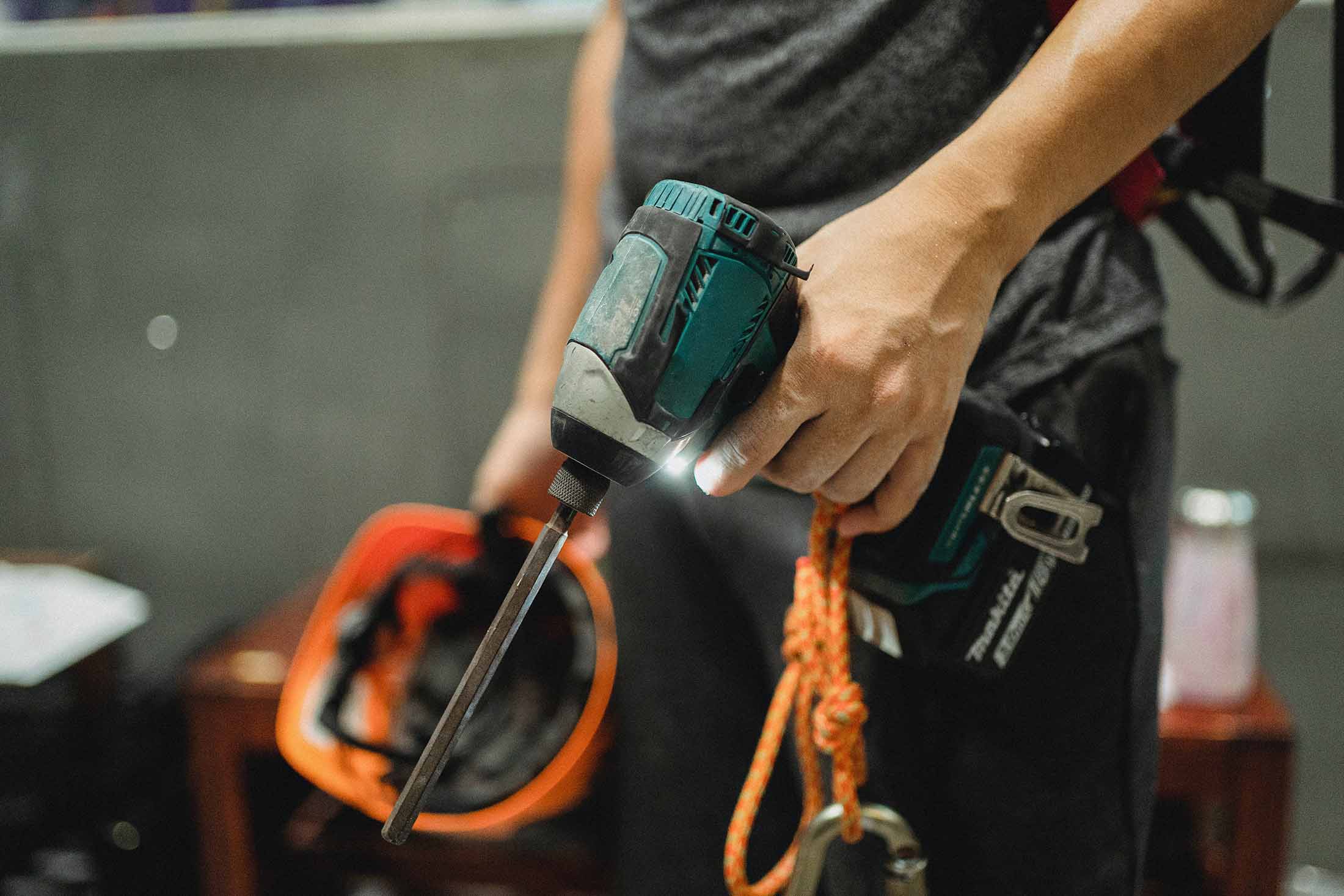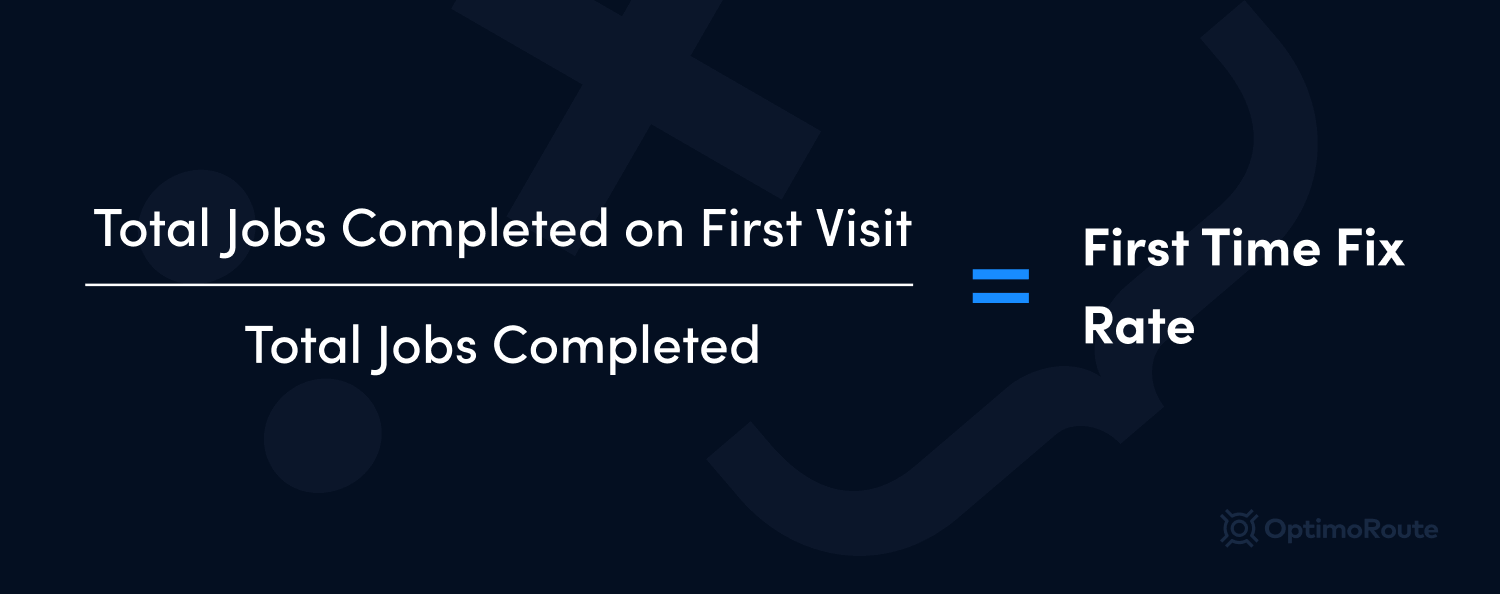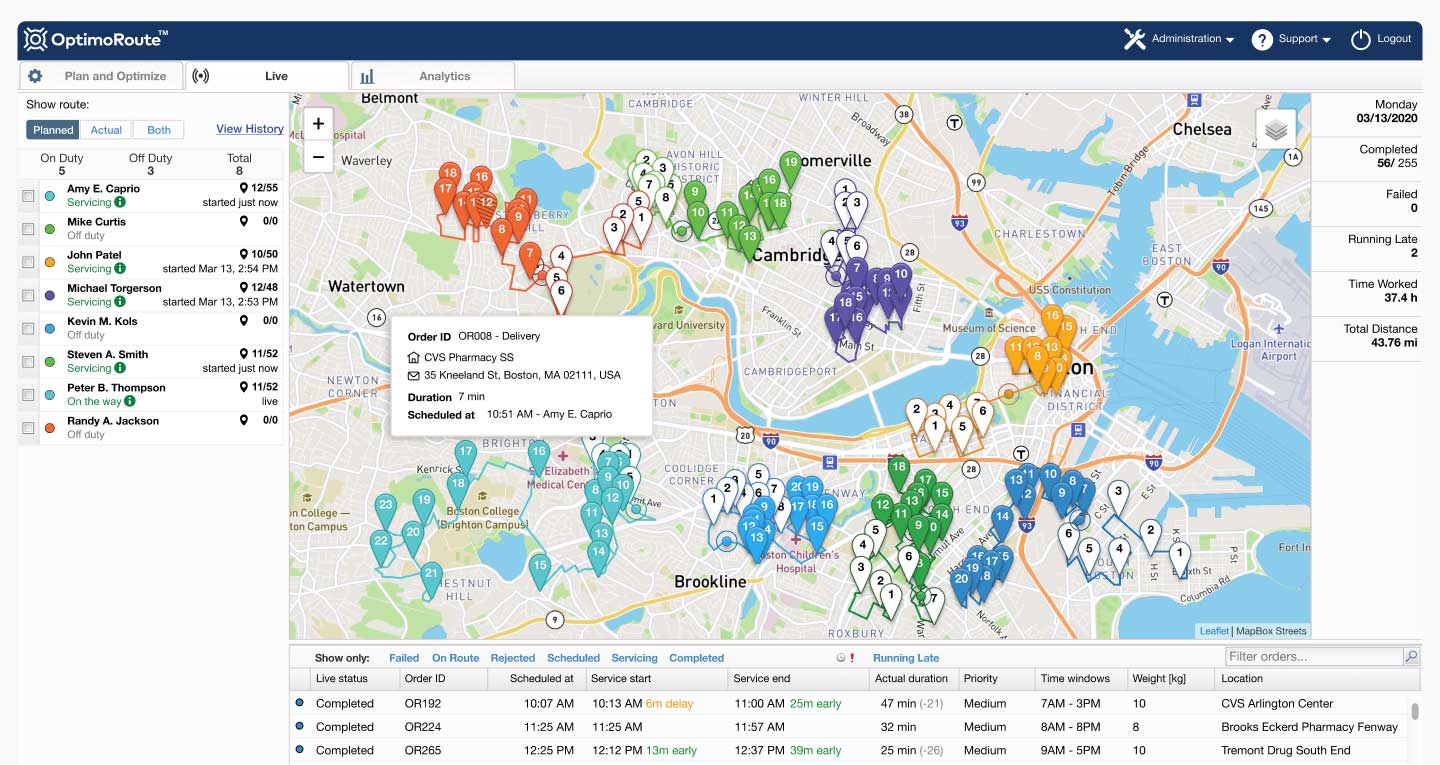How to Calculate and Improve First-Time Fix Rate

When it comes to customer service, the first impression can make or break your business. That’s because 24% of customers who have a great first experience will remain loyal to your business for an average of two years. However, a negative interaction has the opposite effect, leading customers to avoid your business entirely.
You won’t get a second chance at wowing new customers with your customer service. But making sure the first experience goes above and beyond customer expectations means you won’t have to. The best way to do this is with a high first-time fix rate that guarantees your business makes a great first impression.
Jump to the section that most interests you:
- What Is First-Time Fix Rate?
- Why First-Time Fix Rate Is Important for Field Service Businesses
- First-Time Fix Rate Calculation
- 4 Ways to Improve First-Time Fix Rate
- Improve FTFR and More With OptimoRoute
What Is First-Time Fix Rate?
First-time fix rate is the business metric that indicates how often a field service technician successfully responds to a customer’s service call on the first visit. It is an important maintenance KPI and business benchmark that provides insight into productivity and the customer experience. In order to fix problems the first time, technicians need to have the proper skills and equipment for the job when they arrive at the site. Without those two things, they will be forced to leave the job site and return at a later date to resolve the issue for the customer.
Why First-Time Fix Rate Is Important for Field Service Businesses
When a customer calls a plumbing business, installation business, or any other field service organization, they expect a knowledgeable technician to resolve the problem quickly. A high first-time fix rate improves customer satisfaction by meeting customer expectations and saving them from the cost of additional service visits. More importantly, it improves your bottom line.
According to data from the Aberdeen Group, the average first-time fix rate for field services businesses is 75%, while “best-in-class” businesses boast an impressive FTFR of 89%. The data also showed that when a company wasn’t able to provide a first-time fix, it took an average of 1.6 additional visits to resolve the issue.
These repeat visits lead to extra operational costs for every additional visit required to resolve the issue, including pay for the technician, additional training, and spare parts. They also require additional time from your technicians, reducing their capacity to take on other jobs. The Aberdeen Group found that these costs fall somewhere between $200 and $300 for every additional dispatch to a job site. For businesses with a poor first-time fix rate, those dispatch costs multiply quickly.
First-Time Fix Rate Calculation
To calculate your business’ FTF rate, divide the number of jobs fixed on the first visit by the total number of jobs. The outcome is your FTFR. You can do this calculation for employees to gauge their success on an individual level or for specific types of services. This can help you see where your technicians excel and where there is an opportunity for more training.

You can do the FTFR calculation manually or take advantage of our free first-time fix rate calculator below.
4 Ways to Improve First-Time Fix Rate
You can improve your first-time fix rate by pairing jobs with skilled technicians, providing dispatchers with visibility, and taking thorough notes. You can do these things manually or invest in field service management software to help streamline and automate your workflows.
Make sure the right technician is paired with the right job
A common reason why companies aren’t able to fix a problem on the first visit is that the technician sent to the job site simply can’t. You can avoid this by proactively matching field technicians with the jobs they are best suited for based on their skills, level of experience, and specialization.
For example, imagine a customer calls an HVAC company to repair a broken heating system, but the customer doesn’t know what the problem is and can’t explain the issue clearly over the phone. In this scenario, it’s best to send an experienced field technician who is confident in their ability to independently troubleshoot the problem onsite. However, if a new technician arrives instead and lacks the experience to handle the call on their own, then the HVAC company will have to dispatch a more seasoned technician for a second visit.
If you know your technicians’ skills and abilities, then you might be able to match them to jobs intuitively. However, it will become an increasingly more difficult task as your business grows, you receive more calls, and you must balance technician scheduling to meet customer demands. Implementing a planning solution like OptimoRoute alleviates this burden by automating the process with features like skill matching and workload balancing.
Ask the right questions
Knowledge about the job and what the customer’s expectations are is required to match technicians’ skills with jobs. The only way to get the information you need to inform those matches is to ask your customers the right questions when they call to schedule a service. Once you have the details you need, you can enter them into OptimoRoute’s platform and allow the system to match technicians with jobs, schedule the services, and plan routes to each job site.
Whoever answers the call should ask customers questions about the service they are requesting to understand the difficulty and what type of skillset and tools a technician will need to complete the job. Customers should also be prompted to provide other information about the service, such as the location or if someone will be onsite to meet the technician upon arrival.
It’s a good idea to outline these key questions so that you can reference them on future customer calls. A few standard questions you’ll want to ask regardless of your industry include:
- What type of service do you need?
- If it is a repair, how long has the problem existed? Do you know what caused it?
- When can we schedule the service?
- Will someone be available to meet the technician onsite, or do we have permission to enter?
- Will any pets be at the site when a technician arrives?
- Is there anything else we should know before a technician arrives?
Give dispatchers real-time visibility
Mobile workforce management is essential when technicians are spread out across multiple job sites. Even when technicians are perfectly matched with jobs, unforeseen challenges like a flat tire can force schedule changes. To provide great customer service and maintain a high FTFR, you need to be able to adapt quickly.
OptimoRoute’s driver tracking capability provides dispatchers with real-time visibility into where technicians are throughout the day. This means that if a technician gets held up at a job site or has to leave work early for a personal emergency, dispatchers will know exactly where they were on the route and how many jobs are left. Dispatchers will also have this information for every other technician who is working, making it easy to redistribute and schedule jobs with the technicians who have the skills to complete them.

Keep detailed notes
Even the best-performing companies don’t have a 100% first-time fix rate. No matter how well you prepare and match technicians with service requests, at some point, you’ll have to plan a return visit for a job. When that happens, your goal should be to ensure that one follow-up visit is all that’s required to complete the service. The best way to do this is by taking detailed notes about the service, why it wasn’t completed, and what a technician will need to get the job done.
OptimoRoute facilitates this by allowing technicians to save notes about the job directly within the system. Dispatchers and other technicians can then reference these notes to ensure that they don’t run into the same problem twice.
Improve FTFR and More With OptimoRoute
Implementing a route optimization and planning software like OptimoRoute can help improve your FTFR by automatically pairing technicians with the jobs they are best suited for. It also helps save dispatchers time by automatically planning routes up to five weeks in advance, allowing them to prioritize other tasks that can’t be automated.
To see how OptimoRoute can help improve your first-time fix rate, start our free 30-day trial today!
Try OptimoRoute™ for Free
No installation or credit card required


